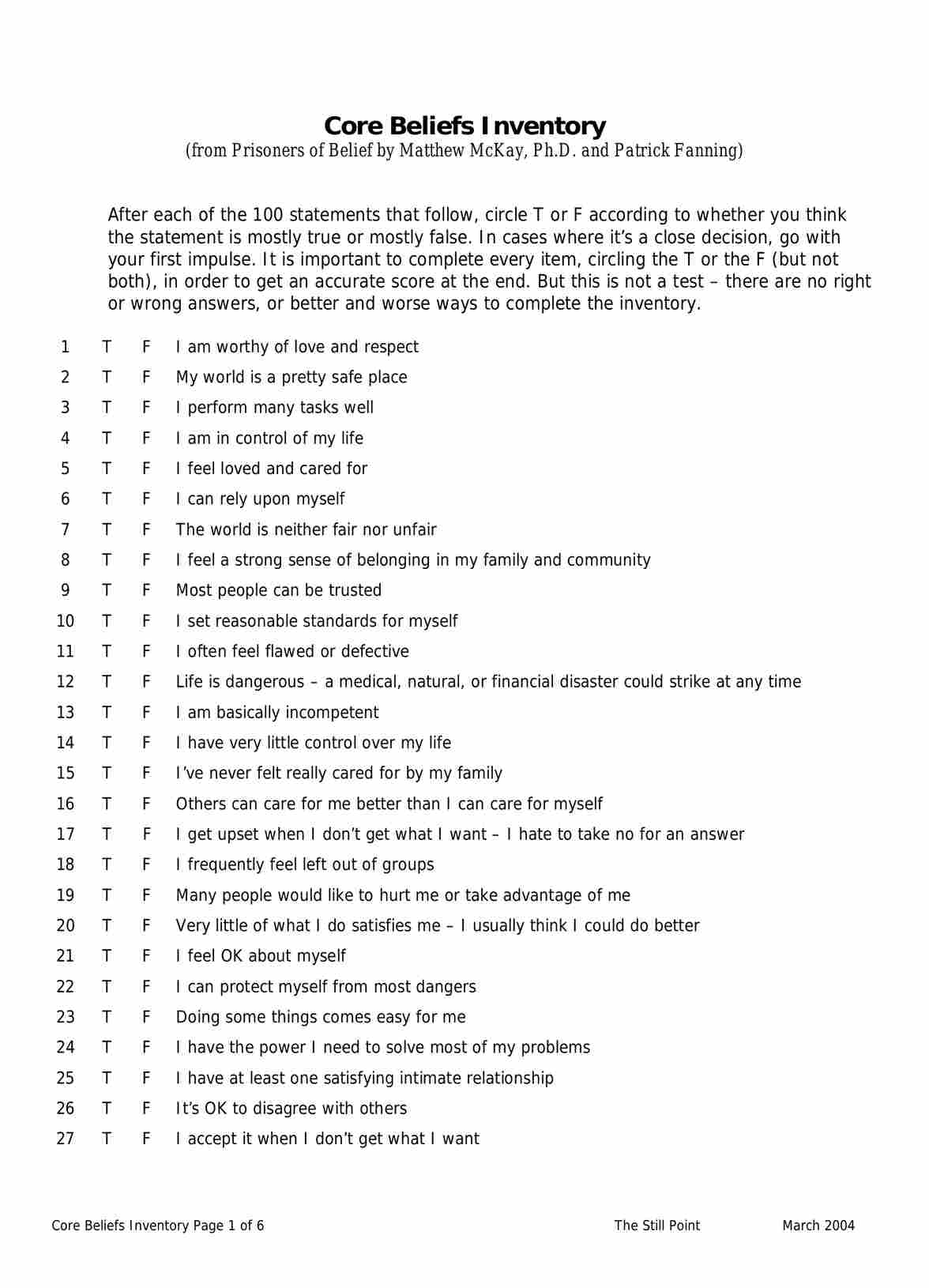In a clinical setting, the Core Beliefs Inventory can be used as a tool to identify negative underlying beliefs that may be contributing to a patient's mental health issues. The inventory helps to identify these core beliefs so they can be addressed during cognitive behavior therapy or other forms of treatment.

Core Beliefs Inventory
Learn how the Core Beliefs Inventory can help your clients unearth their values. Download a free PDF template here.
Core Beliefs Inventory Template
Commonly asked questions
In cognitive therapy, the Negative Core Beliefs Inventory is crucial for identifying and understanding a patient's underlying negative beliefs. This brief measure provides insights into the assumptive world developed by the patient, which can often be the root cause of their distress or psychological disorders.
The Negative Core Beliefs Inventory or Core Beliefs Inventory acknowledges the significant role that religious and spiritual beliefs play in an individual's worldview. It includes questions designed to explore these areas, understanding that they can often form an essential part of a person's core beliefs. Thus, this inventory provides a comprehensive understanding of the patient's belief system, which is crucial for effective therapy.
EHR and practice management software
Get started for free
*No credit card required
Free
$0/usd
Unlimited clients
Telehealth
1GB of storage
Client portal text
Automated billing and online payments











